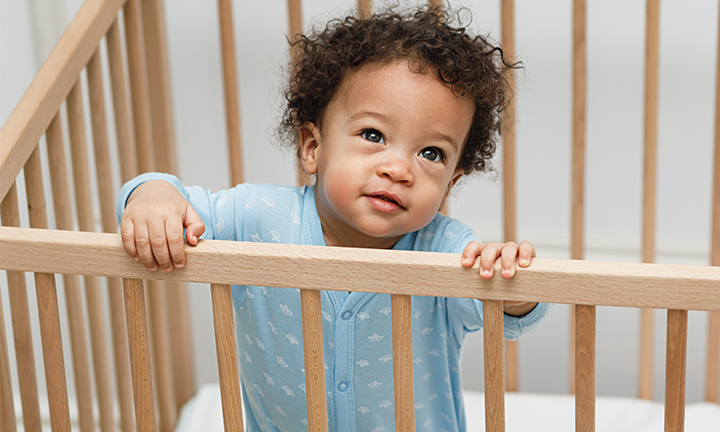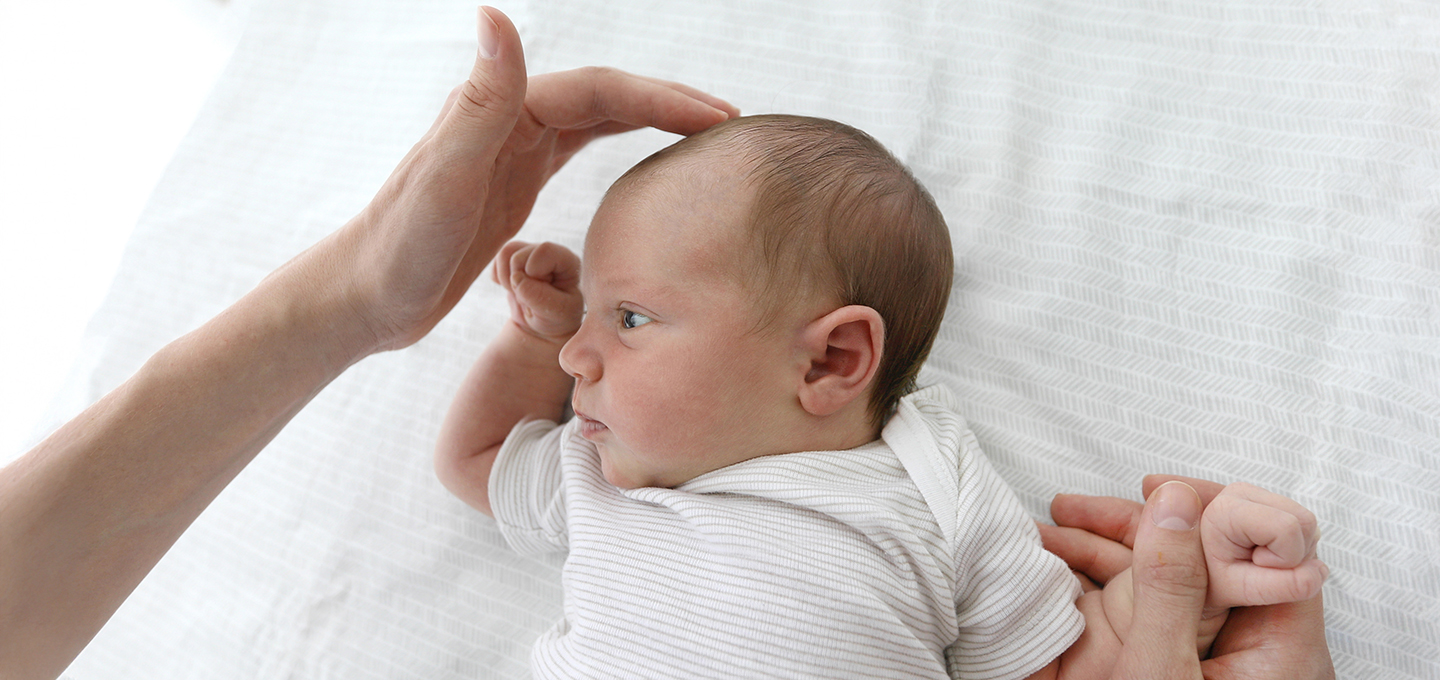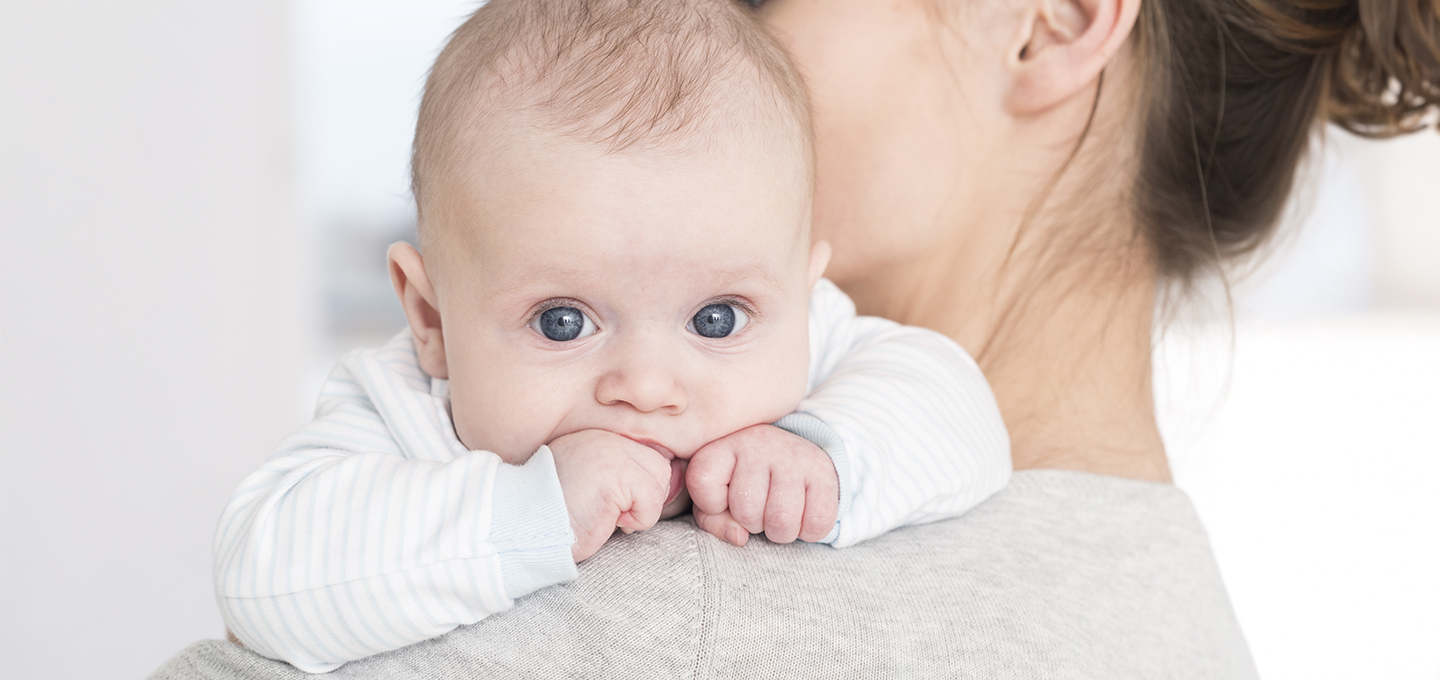
How Do Developmental Milestones and Leaps Affect Sleep?


While the excitement of watching your baby develop and master new skills is palpable, it’s important to know that with all their growth, there are some normal, and expected, sleep disturbances that often pop up. This is because more than 20 developmental leaps and milestones in your baby’s first year are known to affect sleep.
While sleep regression and sleep disruption can be frustrating – and exhausting – it’s important to remember that these periods are temporary. Here’s a brief overview of the major developmental milestones your baby will experience that may affect their sleep and what you can expect regarding their sleep patterns along the way.
What is a Developmental Leap or Milestone that Affects Sleep?
A developmental leap refers to a period in your baby’s life when they make significant progress in their mental, emotional, or physical development. A developmental milestone is a specific skill or ability that a baby or child typically reaches by a certain age.
A developmental leap is often characterized by noticeable changes in behavior, new skills being developed, or age-appropriate milestones being reached. For example, when your baby starts to crawl, speaks new words, or shows increased awareness or understanding of what’s happening around them are milestones that can be reached during a developmental leap.
While exciting, when your baby goes through a developmental leap or reaches a new milestone, they may experience sleep disruptions as they adapt to their physical changes, new skills, or understanding of their world.
All babies are unique, and the same goes for how and when they go through a developmental leap.
Why Developmental Leaps and Milestones Impact Sleep
Your baby's brain grows rapidly in the beginning of their life, with much of this growth happening while your baby is asleep. Therefore, as your baby develops both physically and mentally, various aspects of their sleep will be affected in different ways.
These temporary sleep disruptions caused by developmental leaps and milestones are called sleep regressions. Since sleep regression typically happens during a developmental milestone, many experts call them sleep progressions. They are a good sign your baby is developing well!
Common milestones that may impact sleep include:
To get ahead of the inevitable sleep disruptions ahead, take this 3-minute sleep quiz and get a personalized plan for supporting your baby’s sleep as they grow. Sleep fundamentals such as a biologically aligned sleep schedule and perfected bedtime routine are proven to help prep your baby for the developmental leaps that affect sleep ahead.
Developmental Milestones That Affect Sleep by Age
Here is a breakdown of what you may expect in terms of developmental milestones that could disrupt your baby’s sleep.
Remember that all babies are unique and may go through a developmental leap at different times. If you have any concerns about your baby reaching a developmental leap, speak to your pediatrician who can share advice specific to your baby.
0–3 Months Newborn
Newborn babies need a ton of sleep to help them develop as rapidly as they do, averaging 1-1.5 inches in length and gaining 1.5-2 pounds per month. They typically sleep 14-17 hours within a 24-hour period.
At this age your baby’s eating guides their sleep patterns. They often feed every 2-3 hours but sometimes more – they can experience 3-5 growth spurts during this short time!
At 0-3 months old your baby has not reached the developmental milestone of their circadian rhythm maturing, so they often confuse day and night. It may seem like they are mostly awake at night and sleep most of the day. Try to offer them plenty of outdoor time or light during the day, keep their room dark, and limit naps to 2-3 hours to help with this. The Eat Play Sleep schedule is an easy way to start developing a daytime routine for your little one.
4–5-Month-Old Babies
Around 4-months-old or 5-months-old a big developmental milestone for your baby is that their circadian rhythm begins to mature. This is their internal clock, which is starting to consolidate sleep with more happening at night. Your nap schedule may change to 3 nap schedule because of this.
Part of your baby’s circadian rhythm maturing is that they start to fully wake during sleep cycles. This can cause what is known as the 4-month sleep regression.
When they wake during sleep cycles, they may need support to fall back asleep. This is normal – like learning to ride a bike, they need time and practice to figure out how to fall back asleep on their own.
6–7-Month-Old Babies
There are many physical and cognitive milestones for a 6-month-old or 7-month-old that may affect sleep.
One is teething, which can be uncomfortable and lead to difficulties falling asleep or staying asleep. This developmental leap also comes with a growth spurt, so it’s not uncommon for babies who previously slept through the night to start waking due to hunger.
Other milestones are rolling over, sitting up, and even crawling. Practicing their new skills is way more exciting than sleeping, so don’t be surprised if they're practicing in their crib when they should be sleeping.
8–10-Month-Old Babies
At 8-months-old, your baby is reaching new physical developmental milestones, such as learning to crawl, and cognitive developmental milestones, such as understanding object permanence. Object permanence is a significant developmental milestone that can affect sleep.
Before this developmental leap, when you left the room, your baby would simply shift their focus to something else. Once your baby understands object permanence, they realize that when you leave the room, you haven’t disappeared – you’re just somewhere else, doing something else, and they have FOMO.
This awareness is at the core of the 8-month sleep regression. To help your baby overcome sleep problems caused by separation anxiety, it's important to maintain your schedule, stick to your bedtime routine, and offer extra reassurance before bed. With patience and consistency, your baby will navigate through this sleep regression.
At 8 months, your baby will also transition from three naps to two. Dropping that last nap of the day may require adjusting bedtime to earlier to help ease the transition.
Pediatric sleep consultant Mandy Treeby has found that babies who have been formally sleep trained often have an easier time with sleep regressions because they know how to help themselves fall asleep or fall back asleep if they wake. If you’re curious about sleep training, download the Smart Sleep Coach by PampersTM app, which can walk you step-by-step through one of many approaches to sleep training, ranging from methods that involve zero crying to methods that require less parental involvement.
11-Month-Old Babies and Older
By 11 months, your baby is likely crawling and possibly even cruising along furniture. By around 12 months, if they haven’t already taken those exciting first steps, they soon may.
This newfound mobility often leads to babies staying up at night to practice standing and moving their little legs. The ability to pull up on in their crib and maybe even call out your name can pull at your heartstrings, but remain firm if your baby resists bedtime or wakes up during the night. Don’t introduce new sleep habits, such as letting them fall asleep while being held or eating, just to get them to sleep. Once the sleep regression ends, which it will, any sleep crutch will linger.
Their changing sleep patterns also will, again, cause for a nap schedule change. You may notice some overtiredness or difficulty falling asleep at night while they adjust to their new schedule.
Tips for Sleep Regressions During a Developmental Leap
Here is our expert-approved advice for navigating sleep regressions that are caused by a developmental leap:
If your baby is older, distracting your baby’s disinterest in sleep with things like asking them to choose what PJs they wear or what book you read can help them feel like they have some more control. It’s okay to say no to your baby, especially when it comes to them protesting going to sleep.
If all their needs are met, try and be firm – introducing a new sleep-related habit during a development can cause a long period of disrupted sleep.
FAQS AT A GLANCE
Temporary sleep disruptions often coincide with your baby reaching a developmental milestone. There are tried-and-true ways to help your baby cope with sleep regression, and usually it will get better after a few weeks.
The Bottom Line
It’s exhausting for parents when your baby has disrupted sleep because of a developmental leap or milestone. However, periods of sleep regression because of a developmental leap are normal – and temporary.
Understanding these developmental leaps and what developmental milestones may affect sleep can help you provide the right support and encouragement for your baby. If you stick with your routine, don’t introduce new sleep habits, ensure your baby’s sleep environment is perfected, and keep an eye on their sleep cues, your baby should sail through their sleep challenges quickly and with ease.
If you’re struggling with sleep regression because of a developmental leap or milestone, the Smart Sleep Coach app is full of tools and advice for parents of babies and young toddlers. If you have any additional concerns about your baby’s development, reach out to your pediatrician for further guidance.
- Annals of Neurology, “Infant developmental milestones and subsequent cognitive function”
- National Institute on Deafness, “Your Baby's Hearing and Communicative Development Checklist”
- Sleep Medicine Review, “Normal sleep patterns in infants and children: a systematic review of observational studies”









